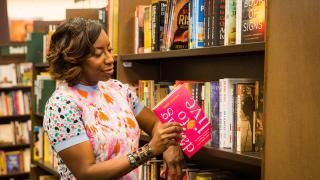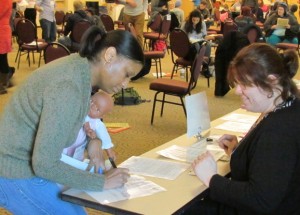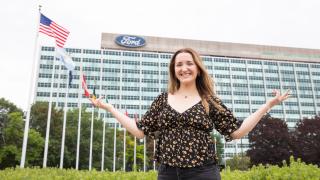
 Most of them don’t worry about transportation.
Most of them don’t worry about transportation.
They have their own cars.
And many of them don’t fret about child support payments.
They don’t have kids.
But for a few hours Friday and Saturday, University of Michigan-Dearborn students did have to worry about transportation, child support and a bevy of other things.
That’s because more than 100 UM-Dearborn students participated in a poverty simulation workshop in Kochoff Hall. The event, organized by the Kalamazoo County Poverty Reduction Initiative, attracted students studying sociology, political science, economics, business and urban and regional studies.
Students played the role of low-income residents and had to figure out how to negotiate various private and public organizations in order to pay the bills, provide food and shelter for their families and keep their children in school.
The purpose of the simulation was trifold – to increase students’ awareness of the reality of poverty, to help students consider what it might be like to experience poverty and to enhance students’ critical thinking skills about the causes of poverty and the barriers that perpetuate its cycle.
“Instead of just teaching people about poverty, you get a small view of what it’s like to manage with limited resources,” said Pat Smith, UM-Dearborn economics professor who helped organize the event.
Smith participated in a poverty simulation last fall to determine whether to organize such an event on campus. She was handed a packet upon her arrival, which included her identity – an elderly retiree who lived in a homeless shelter.
“It’s a weird and strange experience,” she said. “It’s very confusing and you get frustrated. You start to ask yourself, ‘How would I feel if I was actually having to live like this?’ You know it’s not real, but you still end up getting frustrated.”
The university’s student engagement and inclusion offices, as well as the behavioral and social sciences departments and the College of Business sponsored the poverty simulation.
Volunteers, including current and retired faculty, staff, graduate students and alumni, also played the role of teachers, police, bankers and others.





